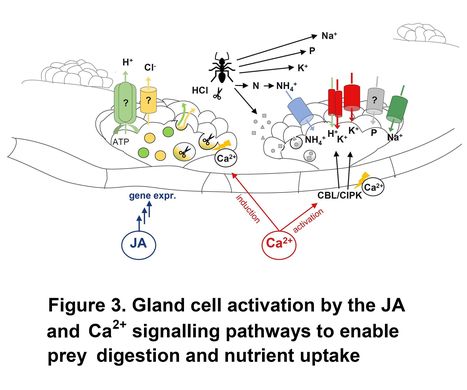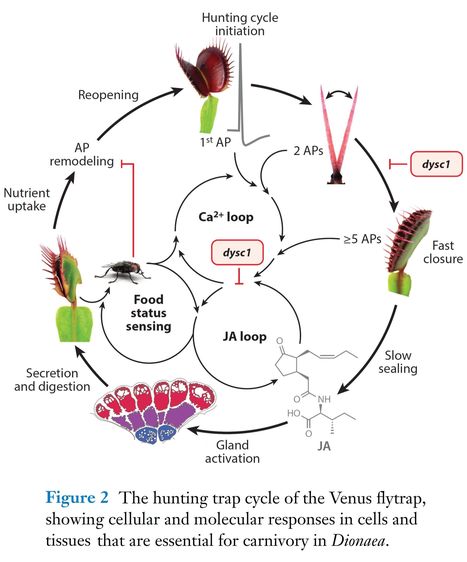
|
Scooped by Julio Retamales |
Authors: Jennifer Böhm and Sönke Scherzer.
Plant Physiology (2021)
One-sentence summary: Origin and molecular basis of plant electrical signal transmission with associated downstream processes exemplified by the hunting cycle of the Venus flytrap.
Excerpts: "Plant long-distance electrical signalling events in response to environmental stimuli are widely described in three different manifestations: i) variation potentials (VPs; these highly variable signals are also called electro-potential waves or slow wave potentials (SWPs)), ii) system potentials (SPs) and iii) APs."
"Of these three electrical signals, APs propagate most rapidly within the plant body, with typical propagation speeds calculated in the centimetre-per-second range (Volkov et al., 2008, Vodeneev et al., 2015).
"Because of these robust APs, a great deal of work on electrical signals in plants has been done on the Venus flytrap. In this review, we therefore focus on carnivorous examples from the plant electrical signalling literature and following membrane transport mechanisms underlying the carnivorous lifestyle, including prey recognition and capture, digestion, and nutrient uptake."
"Mimicking a series (more than three) of trigger-hair stimulations, the JA signalling pathway is induced, mediating the expression of genes encoding prey-degrading hydrolases in the secretory gland cells."
Julio Retamales's insight:
This article is related with a review by Adamec et al. ("Recent ecophysiological, biochemical and evolutional insights into plant carnivory") in Annals of Botany. Such review was just posted here (see below) and is to be found at:
- https://doi.org/10.1093/aob/mcab071
No comment yet.
Sign up to comment



 Your new post is loading...
Your new post is loading...









